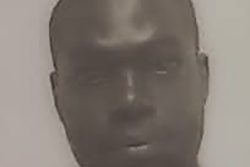STRASBOURG, France (Reuters) – NATO named Danish Prime Minister Anders Fogh Rasmussen as its next leader yesterday, averting a damaging split with Turkey at a 60th anniversary summit marred by rioting protesters.
US President Barack Obama prodded European allies to do more in Afghanistan, but received pledges for only 5,000 extra troops, the majority of whom will go on a temporary basis to provide security during August elections.
The meeting of the 28-nation military alliance, created after World War Two to defend Europe’s borders, exposed transatlantic divisions despite a new US strategy for Afghanistan that Obama’s European allies broadly welcomed.
The summit was also plagued by unusually destructive protests, with masked youths burning down a seven-storey hotel and riot police unleashing volleys of teargas and shock grenades to try to contain the violence.
Obama was cheered by crowds waving American flags when he arrived in France on Friday with his wife Michelle, offering the prospect of a new era of cooperation with Europe following the strains under his predecessor, George W Bush.
“The United States came here to listen, to learn and to lead, because all of us have a responsibility to do our part,” Obama told reporters at the end of the two-day summit.
“America cannot meet our global challenges alone. Nor can Europe meet them without America.”
Obama then flew to Prague for a US-European Union summit today and will go on to Turkey, the last stop on a tour that started at the G20 economic summit in London. In Strasbourg, as in London, Obama played a big role in securing a compromise deal but did not win major concessions from allies.
Obama played a key role in brokering a deal with Turkey on the North Atlantic Treaty Organisation’s next leader. Ankara had opposed Rasmussen’s bid because of his handling of a 2006 crisis over cartoons of the Prophet Mohammad in a Danish newspaper.
When Turkey threatened to torpedo his candidacy, US officials said Obama pulled Rasmussen and Turkish President Abdullah Gul together, helping avert a damaging row that could have derailed the summit and hurt all three leaders.
Gul later told reporters that Rasmussen, who will travel to Istanbul next week, had pledged to make an “extraordinary effort” to overcome concerns over his image. It also received assurances one of Rasmussen’s deputies would be a Turk.
“I made it clear I will reach out to the Muslim world and I will make sure we will cooperate closely with Turkey,” said Rasmussen, who will take over from Dutchman Jaap de Hoop Scheffer on Aug. 1.
NATO members came to the summit in the French city of Strasbourg and nearby German towns of Kehl and Baden-Baden hoping to forge a new strategic vision for the alliance.
NATO accepted France back into its military command after four decades, and welcomed Albania and Croatia as members.
The group has expanded to 28 nations despite the demise of its first foe, the Soviet Union, but is struggling in Afghanistan, seven years after US-backed forces toppled the Taliban following the Sept. 11 attacks on the United States.
NATO members agreed at the summit to send 5,000 additional troops and trainers, including 3,000 soldiers that will help provide security during Afghan elections in August. But the pledges are unlikely to silence critics who say the war is becoming increasingly “Americanised.”
The United States has 38,000 troops in Afghanistan, more than all the other national contingents put together. Obama has said he will add an extra 17,000 combat troops as well as 4,000 others to help train Afghan officials.
His new strategy also focuses on rooting out insurgents across the border in Pakistan and he said on Saturday additional aid for that country would depend on how Islamabad tackled the threat of terrorism.
Masked youths hurled petrol bombs, smashed windows and ransacked shops, temporarily forcing police into retreat in Strasbourg. German police crossed the short distance into neighbouring France to help put out fires, which gutted a row of low storey buildings and ravaged an IBIS hotel.
The worst of the violence was centred close to the French side of the Bridge of Europe, just 5 km (3 miles) from the conference centre where the leaders met. A pall of black smoke was clearly visible from the summit venue.






